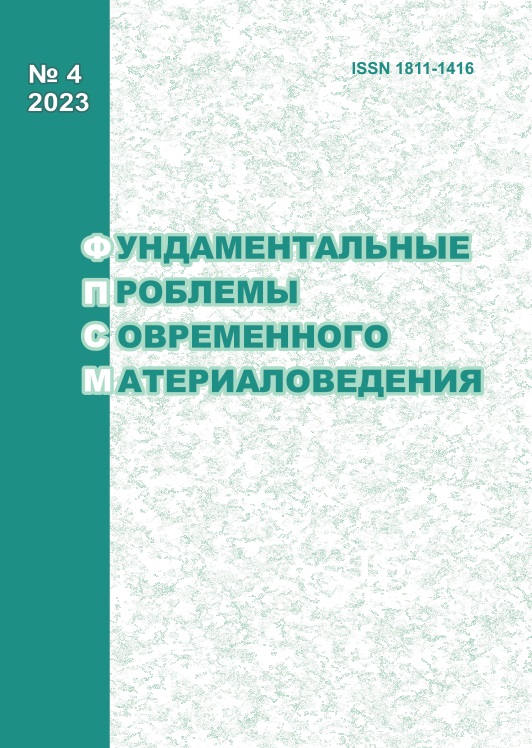ABNORMAL BORON MASS TRANSFER DURING INDUCTION BORATION OF STEEL 20
10.25712/ASTU.1811-1416.2023.04.012
Keywords:
diffusion zone, grain boundary, chemical potential, diffusion coefficient, abnormal mass transfer, reaction diffusion, potential barrier, high diffusion mobilityAbstract
The formation of an extensive diffusion zone up to 980 microns in size at 1000 °C and exposure for 5 minutes in an induction furnace indicates an abnormally high mass transfer of boron during high-temperature boration of steel 20. Such a mass transfer of boron in the diffusion zone is provided by an abnormally high diffusion of boron into the α-matrix. From the analysis of high diffusive mobility affecting boron diffusion we can understand that anomalously high diffusive mass transfer can be ensured by the action of several factors of different physical nature. Firstly, one of the factors is the gradient of the chemical potential, which ensures the course of reaction diffusion and the formation of iron borides FeB. Secondly, high temperature determines high kinetic energy and high diffusion mobility of boron atoms. Thirdly, the high thermal effect of the boride formation reaction (43118.4 kJ/mol) causes a local temperature increase, resulting in an increase in the diffusion mobility of boron in the diffusion zone. The main route of boron in steel during boration is diffusion mass transfer along grain boundaries. The high rate of grain boundary diffusion is associated with the atomic structure of the grain boundary and, above all, with the presence of free volume, excessive concentration of vacancies and areas of tension and compression. Such heterogeneity of the free volume leads to the fact that diffusion can occur mainly along some channels, and not over the entire volume of the grain boundary. The diffusion of the grain under the conditions of the action of several factors listed above, there are several orders of magnitude more than the grain. This effect may be associated with the appearance of the liquid phase in the grain boundaries long before the melting temperature of the polycrystalline aggregate, that is, the diffusion coefficient along the grain boundaries becomes essentially equal to the diffusion coefficient in the liquid. Formally, taking into account the factors affecting the diffusion process can be described as reducing the potential barrier under the conditions of the action of these factors. Of course, the potential barrier does not decrease, but decrease an effective activation energies by the amount of work of external forces. When the effective activation energy decreases to zero, the probabilistic exponential factor in the formula for the diffusion coefficient becomes equal to unity, and the process of boron mass transfer under such conditions takes on an over-barrier character and turns into a kind of autocatalytic mass transfer process. The data presented in the article show that when borating, it is necessary to take into account and investigate abnormal mass transfer. Continuing research in this area will help to better understand the physical mechanisms of these complex processes and develop more effective methods of chemical and thermal treatment.











 Journal «Fundamental’nye problemy sovremennogo materialovedenia / Basic Problems of Material Science»
Journal «Fundamental’nye problemy sovremennogo materialovedenia / Basic Problems of Material Science» This work is licensed under a
This work is licensed under a 
